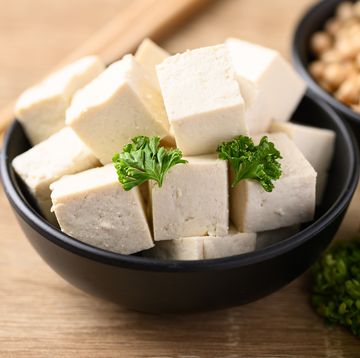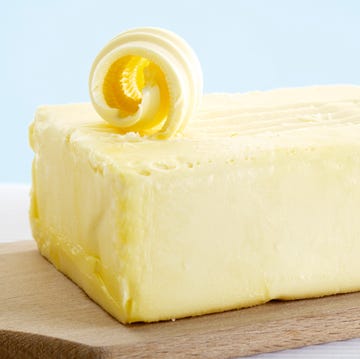The weather is warming up across the country, which means it’s officially farmers' market season! Local farmers and artisans are flocking to outdoor markets to sell us high-quality, seasonal produce.
Farmers' markets can get a bad rap for being financially inaccessible to the average shopper. The stereotypical clientele of these outdoor markets is often believed to be wealthy city dwellers, but these outdoor markets are actually more inclusive than you’d think.
In fact, with the high cost of groceries nationwide, farmers' market products can be similar in price, if not cheaper, than what you’ll find in a standard supermarket.
More From Delish

Take this year’s egg shortage, for example: widespread avian flu primarily impacted industrial farms, which led to a shortage and high prices for grocery-store eggs. Local farms, on the other hand, avoided the brunt of the crisis and sold higher quality eggs at a lower price.
But that doesn’t mean you should buy all of your groceries at the farmers' market. Some products, while fresh and locally sourced, aren’t necessarily worth shelling out the extra cash. The best strategy is to stop by the market for certain ingredients, then stock up on the rest of your essentials at the grocery store.
Which ingredients should you buy at the farmers' market? We’ve rounded up the best products you can buy at your local markets that are far better than the supermarket stuff.
Honey
Many of the adorable bear-shaped bottles of honey at your standard grocery store are actually a blend of several types of honey. These mixtures are processed until the honey is clear. While some people may prefer this type of honey, it’s missing a lot of the natural flavor that comes from the pollen.
The best place to get flavorful honey? The farmers' market! Most varieties sold at your local market are minimally filtered, which removes the debris and honeycomb while maintaining the delicately floral flavor.
There’s also a major benefit to eating honey made by local bees: the pollen inside acts as an all-natural allergy medicine and can protect you from the springtime sniffles.
Bread
Bread is among the first ingredients to go bad in your kitchen. It can become stale or even develop mold depending on how it’s stored. To prolong its shelf life, industrial bakeries will add preservatives to their loaves. This allows the bread to sit in grocery aisles for several days (sometimes weeks) at a time.
The bread sold at farmers' markets, however, are often baked within a day of sale. There aren’t any additives, they can come in fun flavors you can’t find at the supermarket, and they generally taste better too.
On the flip side, farmers' market breads can often go stale faster—but there’s an easy solution! If you’re not eating it right away, simply slice the bread and pop it in the freezer. Then you can just reheat the pieces in the oven or toaster when you want to eat them.
Flowers
The floral sections of some chain grocery stores are often abysmal. Wilting tulips, artificially dyed carnations, and dried up roses are hardly worth the hefty price tags. But if you’re looking to build a bouquet or add a boost of color to your home, the farmers' market is a great resource.
Local florists have a much wider variety of blooms than the commercially sourced flowers at supermarkets. They’re typically much fresher and sold at comparable prices. Even if flowers aren’t on your weekly shopping list, it’s worth checking out the flower stall at your farmers' market and occasionally treating yourself or a loved one.
Bones
Meat purveyors at farmers' markets have some uncommon cuts, but they aren’t the most economical option. While you should reserve those products for special occasions, you should still stop by those stands to get your hands on some spare bones.
Why do you need bones, you ask? It’s a one-step shortcut to restaurant-quality broth! Just add a few to your simmering soups and sauces, then discard them at the end (just like a beefy bay leaf). Your finished dishes will have extra richness and flavor that you otherwise can’t achieve with store-bought stock.
Supermarkets either receive pre-packaged cuts of meat or discard the bones behind the butcher counter, but farmers' market stands will sell you a bag for a few dollars.
Herbs
Depending on your grocery store, your herb selection may be limited to a few small plastic clamshells in the produce section. And, more often than not, the few sprigs of herbs inside are wilted and past their prime.
If you want to make pesto from scratch without picking through bunches of brown basil, head to the farmers' market. Herbs are abundant and often available at several kiosks, so you can compare and choose the best prices. You’re guaranteed to find the freshest herbs around. And since you won’t need to toss tons of spoiled leaves, this farmers' market pick is better value than the supermarket offerings.
Jams
Unless you’re reaching for Smuckers, a jar of jam can run you at least six dollars at the grocery store. And as much as we love spreading Bonne Maman preserves on our PB&Js, there’s nothing better than homemade jam.
Making it yourself is too time consuming for most people, but farmers' market jam is the next best option. These preserves are typically made in small batches with local produce and can even include exciting herbs and spices to supplement the natural fruit flavor. And to sweeten the deal even more, most market jams are priced similarly to the store-bought stuff.
Eggs
During this year's egg shortage, most farmers' markets dodged many of the supply chain issues that we saw at major grocery stores. While the widespread price hikes have largely leveled out, the cost of local eggs still isn’t far off.
What makes these eggs worth the extra couple dollars is the quality. Small farmers typically feed their chickens with nutrient-dense food as opposed to the low-cost commercial feed used at industrial farms. The chickens also have the opportunity to free range, which allows them to eat naturally growing greens and obtain more nutrients. That means the eggs you end up with have a richer, more robust flavor.
Mushrooms
If you visit your local farmers' market, you may find vendors selling a bounty of fresh mushrooms. These fungi are either cultivated and grown or foraged in the local wilderness, and have a deeply nuanced flavor compared to the pre-sliced button mushrooms in your supermarket’s produce department.
You’re also bound to find more exciting varieties of mushrooms and discover new textures and flavors. And even if you’re a self-described mushroom hater, you’ll likely find a type of mushroom that’ll change your mind.
Drinks
You can’t explore your local farmers' market without grabbing yourself a treat while you shop. Every market offers different selections based on the season, but you can likely find unfiltered apple cider, maple syrup-sweetened lemonade, and other fresh seasonal juices.
What are your favorite farmers' market finds? Let us know in the comments.
Gabby Romero is Delish’s editorial assistant, where she writes stories about the latest TikTok trends, develops recipes, and answers any and all of your cooking-related questions. She loves eating spicy food, collecting cookbooks, and adding a mountain of Parmesan to any dish she can.





















